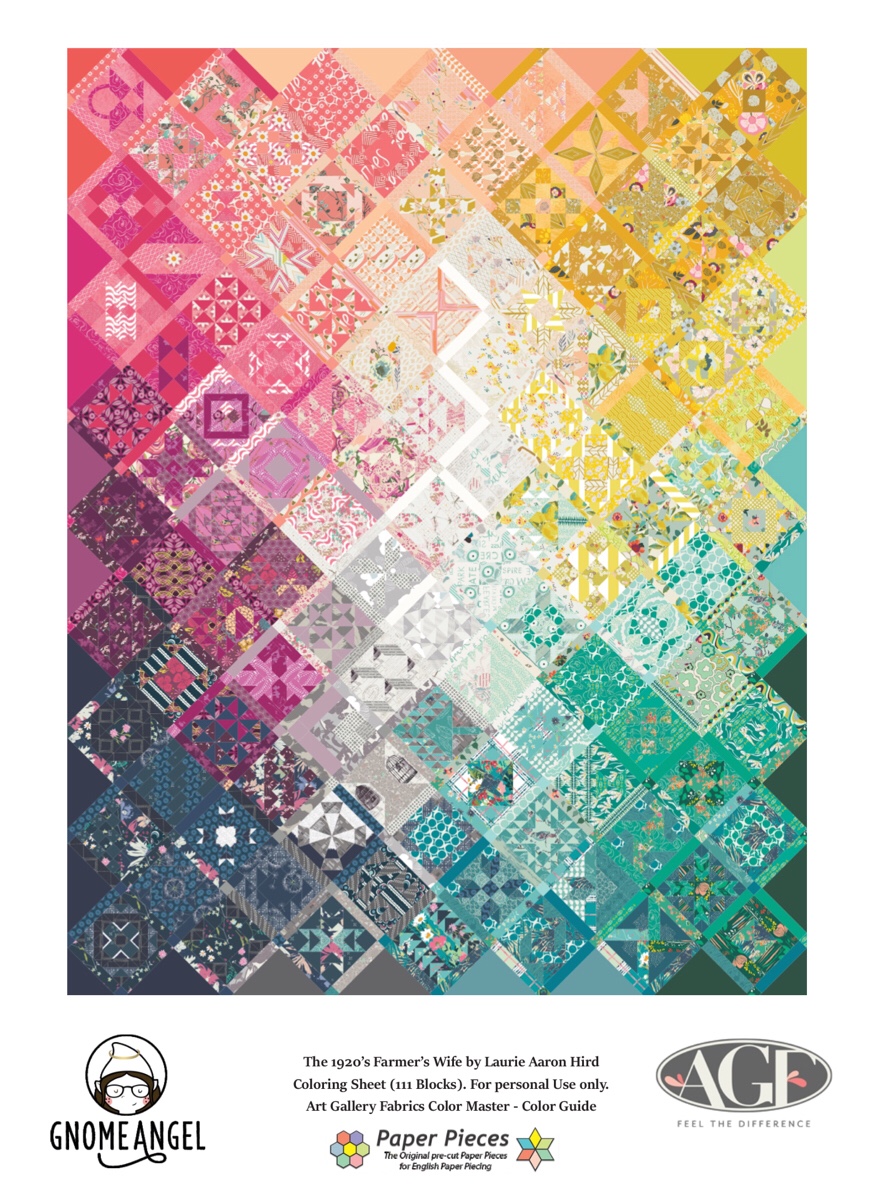
I am a former art teacher. I like to think I know a thing or two about color. Maybe I am overthinking things, but here goes…
Above is the quilt done by the people at Paper Pieces using Art Gallery fabrics. It employs a color wash. Their color wash is based on the use of 13 boxes of fat quarters divided into color groups. Those groups are shown below with bold outlines.

You can see the names of the fabric collections in the edges above.
Groups overlap each other and blocks that are in areas of overlap borrow from two or more color areas. This sounds fairly simple, and it is as long as you are using the curated boxes of fabrics. Once you start choosing your own solids you need to start thinking about whether these groups might be somewhat redundant to the traditional color wheel, and whether you want to use them at all.
For instance, I don’t have use for a gray color area. It is not a part of the color wheel. It is rather the absence of color, so I’m eliminating it altogether. It is well placed in the sample quilt, however. If I was going to use gray at all I might want to intersperse it through the entire quilt.
Next, why do some intermediary colors get represented while others do not? Coralline equates to Red/Orange. Teal equates to Green/Blue. Where is Violet/Red, Blue/Violet, Yellow/Green, and Orange/Yellow? Isn’t Gold really just “dirty” yellow? Maybe I should just let Gold be Orange/Yellow. And Peach is actually just a light value of Orange.
I decided that moving forward I want to have my color plan in place including a strategy for sashing. I’ve decided to use a light value in each color area for sashing. I might be using multiple colors from each color area for the little squares joining the sashing pieces.
I’ve gathered together the fabrics I have for each color area and will display them below.
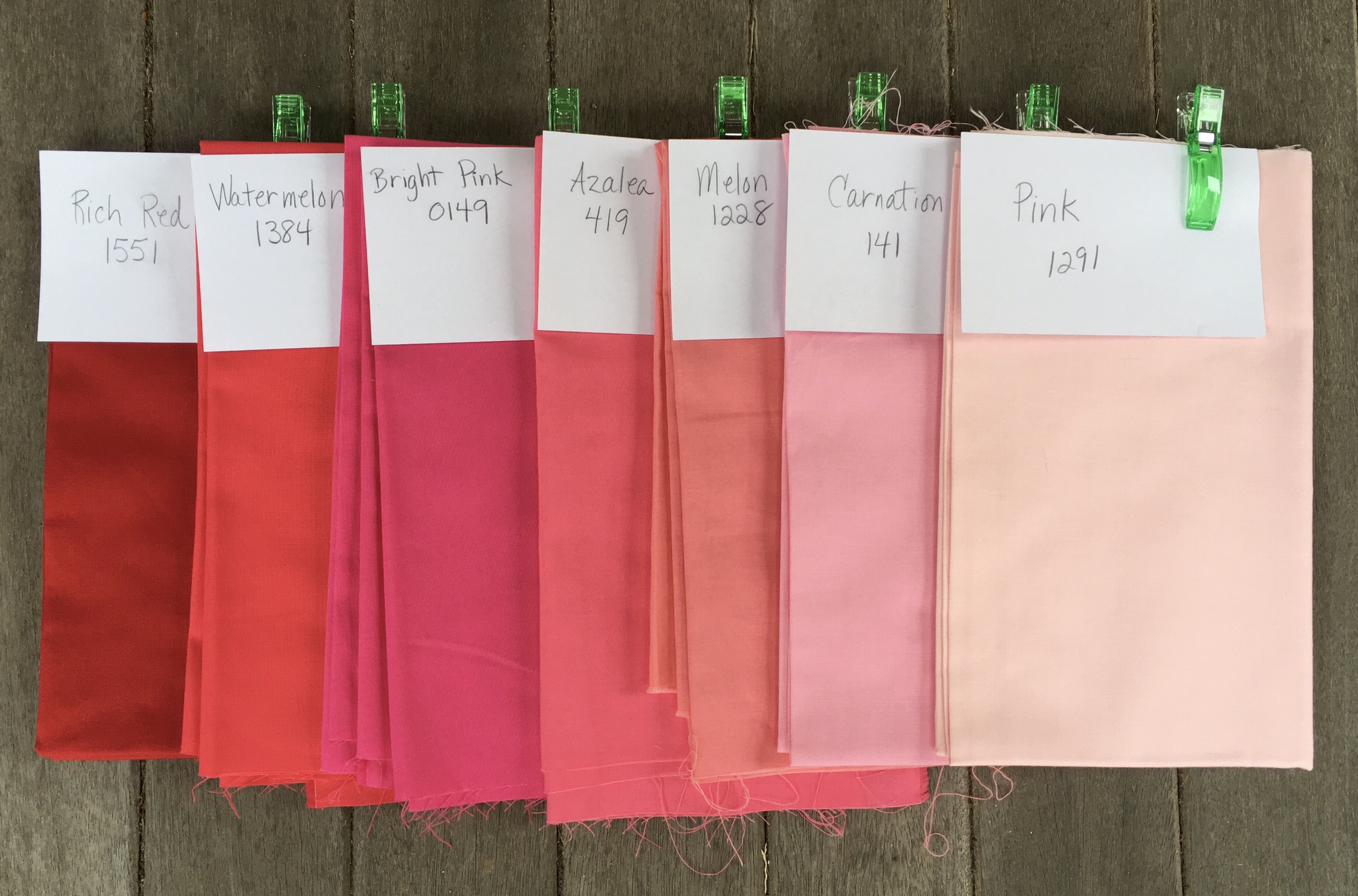
Life Is Pink
I’ve got seven colors for my first color area. I could use either Carnation or Pink for my sashing color.
Many of these blocks have already been constructed, but not with as much thought as I would like. For instance, my first block ended up including a color which I later concluded should be part of the Violet area. I will be going back to examine these blocks carefully before choosing my sashing, border triangles, and joining this corner section.

Coraline
Let’s face it. This area is Orange/Red. So technically the colors in this area should be neither purely Orange nor purely Red. That’s asking a lot from the Kona Collection, and I’m not sure it can be done, so a couple of Orange colors have found their way into this area. Liberal use of Coral and Salmon should make this group read as intermediate between Red and Orange.
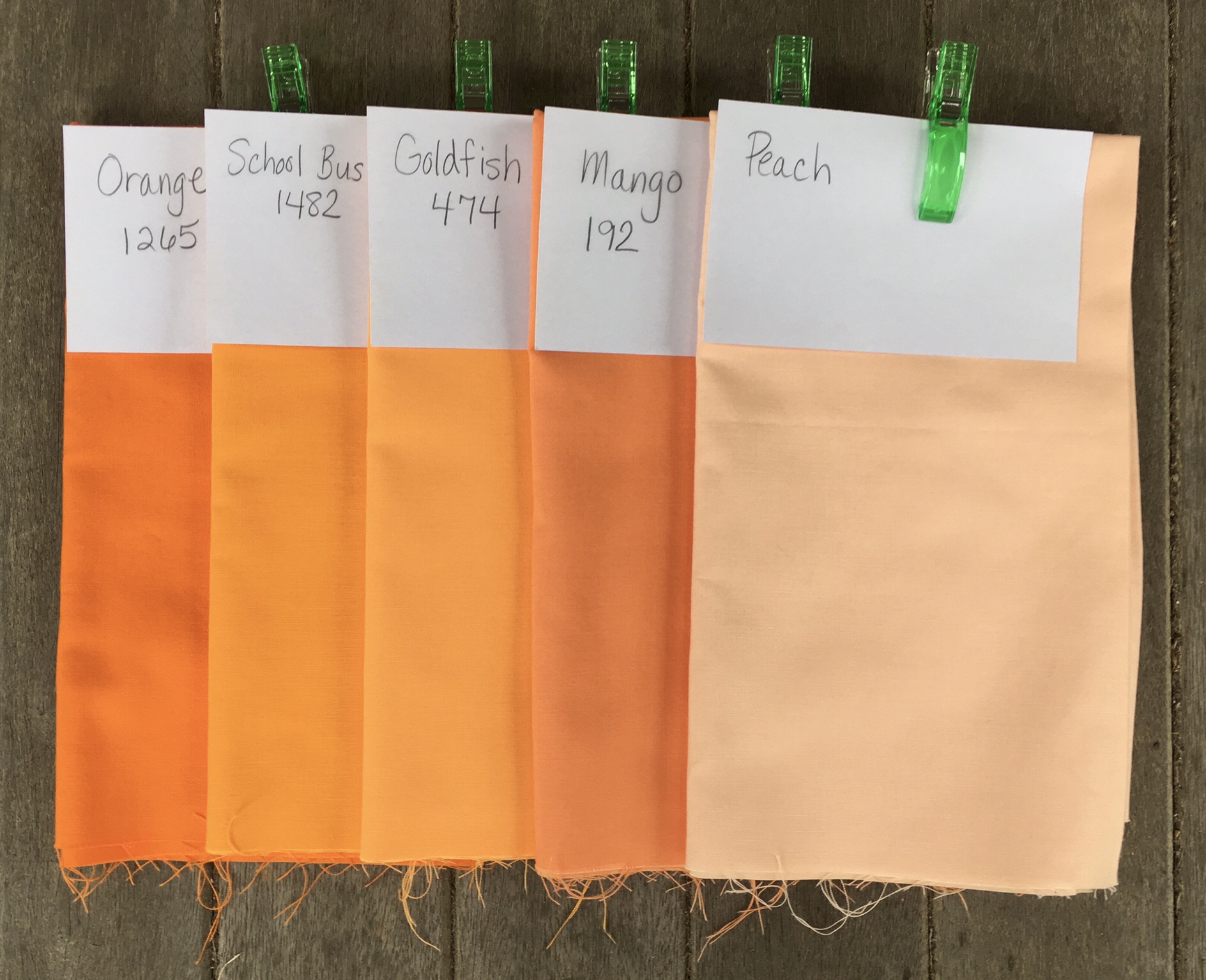
Peachy
Let’s face it. Peachy is Orange.
I’ve doubled up Orange to be used in this group as well as the previous group. (It didn’t even really belong in the previous group). School Bus and Goldfish actually have quite a bit of yellow in them so I’m a bit conflicted about that.
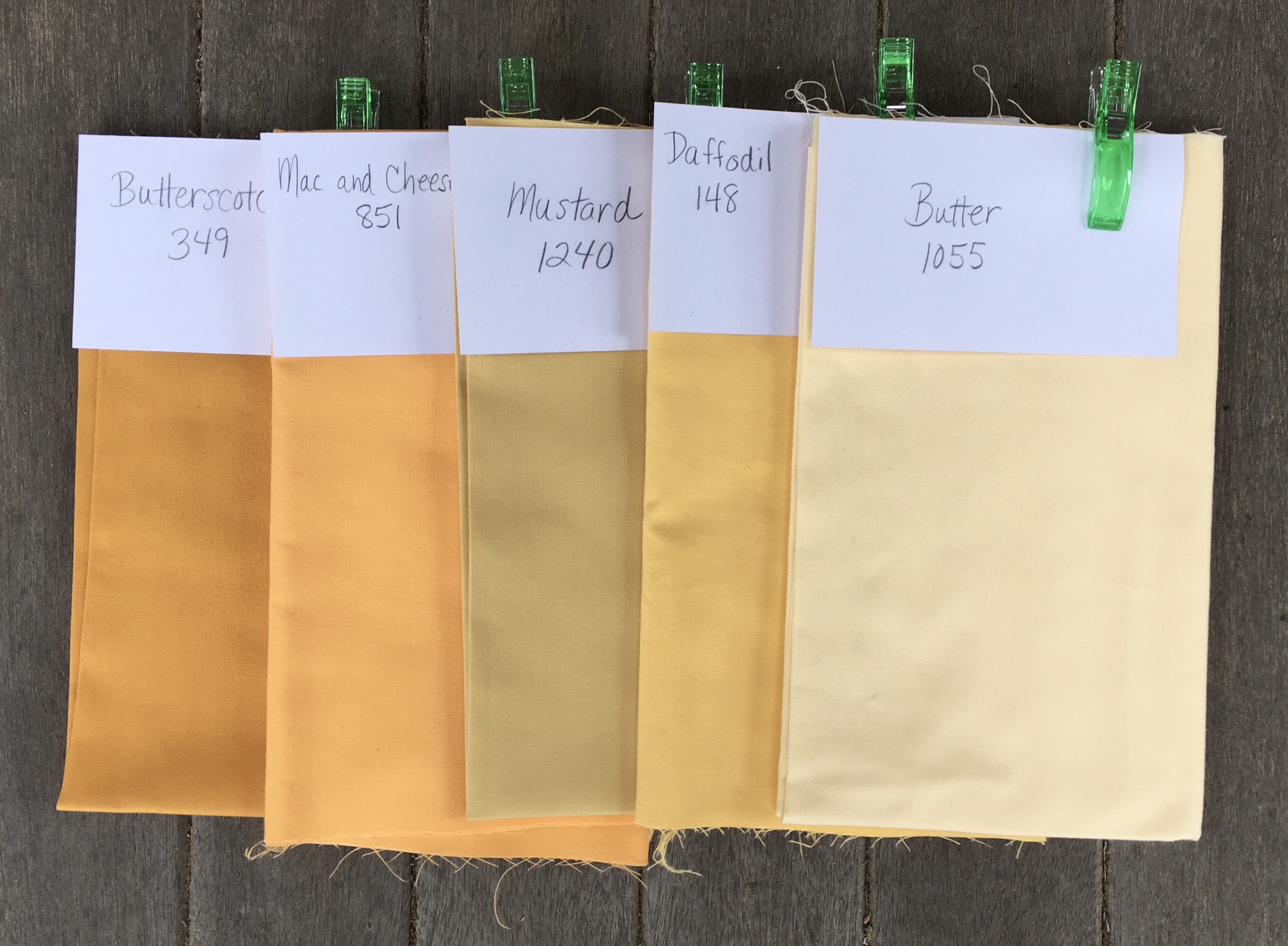
Gold Leaf
Let’s face it. This is dirty yellow, and I am not even sure I like the idea of dirty yellow, and I am not sure that I want to use the dirtiest yellow I’ve got, which is Mustard. Daffodil and Butter are going to find their way into the next section too, but that is enough planning for now.
Above I have only talked about hue (color), but obviously value and intensity come into play. I’ve been troubled by the intensity of the Orange, but maybe if each area has a “screamer” it may read well in the end.
I have plenty to think about revisiting some of my “Life Is Pink” blocks and joining them with sashing. I may be supplementing the color selections in the areas above based on these reflections.
Where did I put that Kona Color Card?
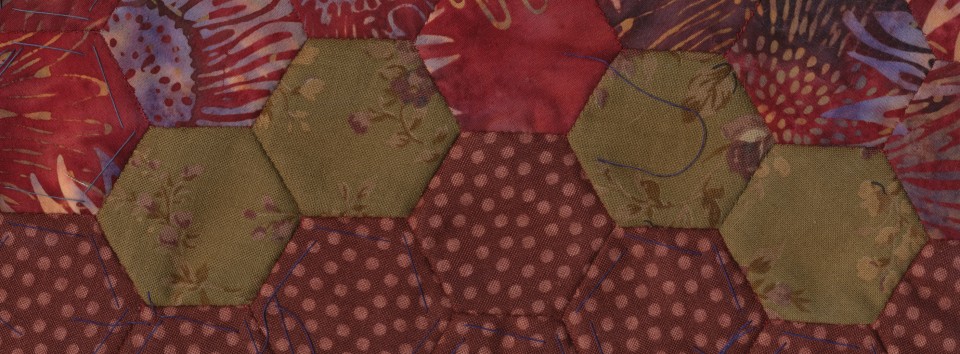
I should have know you are an art teacher…no wonder you explain this so well
Once a teacher, always a teacher.